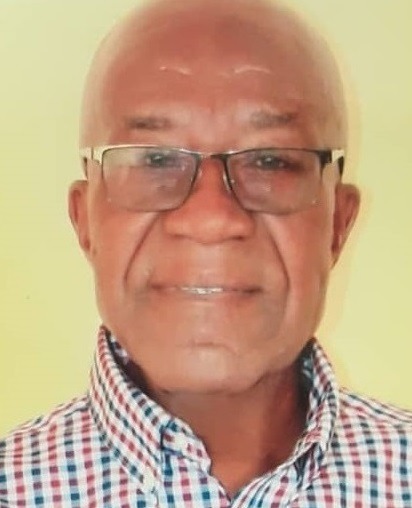By Ken Bediako
As if by design just as I began writing this piece to continue the Down Memory Lane series, my attention was drawn to a statement on radio by GFA Exco-member Oduro Sarfo that he
personally saw nothing special about Kumasi Asante Kotoko FC to warrant so much attention in Ghana football. Unfortunately, I have not succeeded in getting in touch with Sarfo who is known to me since his youthful days at Awudome Estate Kaneshie in the
early 70s. I want him to confirm or deny this highly explosive statement. Honestly I regard it as a false and ridiculous report so I will treat it with the contempt that it deserves and go ahead to recall the glory days of the fabulous club of Ghana.
Kotoko supporters will be too happy to tell you the many firsts they have achieved in Ghana. For example, the first FA Cup holders to receive the title “champion of champions,” the first to
play in boots, the first to supply as many as seven players for the national team, the first to employ a full time expatriate coach, the first to play 22 matches in a row in the league without defeat, 24 times league champions and the last but not the least the first to win the Africa Cup for champion clubs.
The foundation for what can safely be described as the best club in Ghana in terms of achievements was laid in 1924 by 13 young Ashanti boys led by a young driver Kwasi Kumah and L.Y Asamoah, a private electrician who formed a team called Ashanti United. That was in 1926. Five years later it was renamed Kumasi Titanics.
The story goes that Titanics did not find enough luck under their new name and in 1934 they adopted a more powerful name Mighty Atoms.
In 1935 JSK Frimpong popularly called Teacher Frimpong, then a Teacher of the Kumasi Government School, Now Asem Middle Boys School, organised some boys from his school and changed the name to Asante Kotoko after
obtaining special permission from the Asantehene. Nana Osei Agyeman Prempeh 11.
Originally membership of Asante Kotoko was limited to Ashantis and Nzimas only. Of course it is now open to all and it has the largest following in the country.
The club was officially launched on August 31, 1935 before a great assembly of chiefs and people from all walks of life. Since then it has achieved several firsts as enumerated earlier.
Kotoko’s meteoric rise to fame in competitive football began as far back in 1958 when trailing 0-2 in Ghana’s first FA Cup final against traditional rivals Hearts of Oak. They scored four goals in a dramatic finish to snatch the cup.
When the African Cup for champion clubs was instituted in 1964 Kotoko became the second club after model club Real Republikans (now defunct) to represent Ghana. That was in 1966 and since then Kotoko have been in the series more than any Ghanaian club winning the cup twice so far.
The Ashanti Warriors debut in the competition in 1966 ended early in Abidjan via Stade Club.
But they were in top gear the following year when they reached the final against Englebert of Zaire. No winner could be decided after the 1-1, 2-2 affair in the two leg series and a controversial toss of the coin gave Englebert the verdict in Zaire. You don’t believe that coin
tossing could decide the winner of a continental title. Those were the days of funny football regulations in Africa. Kotoko protested against the way the toss was organised and even though the CAF organised a replay on a neutral ground in Yaoundé, Cameroun Kotoko were surprisingly kept in the dark by the GFA. Kotoko had no knowledge of the CAF ruling so Englebert had a sweet walkover. There were rumours that the coin used for the toss had the same face on both sides. Englebert made the first choice so head or tail they would be winners. What a trick. When Kotoko returned to action in 1969 they were halted by Ismailia of Egypt in the semi-finals but they gallantly won the Cup on Jan 24, 1971 beating their old rivals Englebert 2-1 in Kinshasa in 1971.
Canon of Cameroun however halted Kotoko’s ambition of retaining the trophy in an ill-tempered replay in Yaoundé.
Kotoko were in the final once more in 1973 but lost to Vita Club of Zaire and in 1976 their half-hearted approach made their quarter final against Asec of Ivory Coast the last stop.
Things were no better in 1981 as Kotoko were beaten at the quarter final stage by Kaloum Stars of Guinea.
Kotoko still dominating Ghana football, bounced back to winning form in 1982 but lost the cup to Al Ahly of Egypt who snatched an authoritative 3 -0 lead in the Cairo first leg and a 1-1 draw in the second leg in Kumasi was sufficient to win them the cup.
The1983 Cup final turned out to be another Al Ahly-Kotoko affair.
The first leg in Cairo was goalless and Kotoko rose to dizzy heights to win the Kumasi return match 1-0 and the cup for the second time. Thanks to Opoku Nti’s early strike from a tailor measured pass by right winger John Bannerman.
The title defence in 1984 was rather poor
as Kotoko faded out in the very first round through unsung Angolan club Primeirio.
The departure of skipper Papa Arko and his deputy Opoku Nti, coupled with a long list of injuries and nagging Board room wrangling had their toll on the club.
It needed an active coach like British born Ron Heckman to makeshift a team from the spoils to earn Kotoko a face saving triumph over second division Obuasi Goldfields in the FA Cup final.
Forty years down the line Asante Kotoko have failed to maintain their international reputation in Africa whereas their former classmates. Al Ahly of Egypt are still the team to beat in Africa. Asante Kotoko will be 90 years old next year and it is the wish of their current generation of teeming supporters to be served with the type of brilliant football that earned them the enviable appellation Fabulous Porcupine Warriors and was what the legendary sports Director Ohene Djan described as “The indomitable soccer porcupines of Ashanti, enthusiastic and ever defiant, the club over whose popularity the sun never sets.”
Cheers everybody and keep loving sports.
Below are pen portraits of Kotoko 1984 squad:




























































